Perhaps I should be more patriotic, but much as I love the V&A, the latest exhibition is a bit of a bulldog’s dinner. British Design 1948-2012: Innovation in the Modern Age has a fundamental problem with time span and size – there’s simply too much to fit in. Still, this is the exhibition that will be running until 12th August, taking in the Olympics visitors – and all those flocking to our city to mingle with the crowds, when London is the place to be.
The exhibition offers an incredible display of fashion, furniture, art, ceramics, architecture, technology and post-war design. 350 pieces in total, of which more than 250 are from the V&A’s own collection. And it’s quite a feat that all this is crammed into just three gallery spaces – especially when you consider the size of some of the exhibits – an E-type Jag and a Mini, Mark Brazier-Jones’s enormous studio gates and part of Damien Hirst’s Pharmacy restaurant, to name but a few.
Co-curators Christopher Breward and Ghislaine Wood tell a story which, thanks to Mark Jones (recently departed Director of the V&A) conveniently comes full circle – from the first post-war ‘Austerity Games’ in 1948 to the 2012 (pre-First Austerity War?) Olympics. Given the dramatic changes that have taken place over this substantial time period, it can’t have been easy choosing the final exhibits, especially with designers constantly telephoning the museum to find out if their creations were going to be included.
So what is on show?
Room 1: Tradition and Modernity, covers the two decades after the war and juxtaposes the efforts to rebuild towns and cities with ongoing life in the countryside. Here you’ll find futuristic, visionary design from The Festival of Britain – an original drawing of the Skylon, the Festival’s ‘Antelope Bench’ by Ernest Race and Lucienne Day’s famous Calyx furnishing fabric.The Flowers of the Fields of France dress, designed by Norman Hartnell for the Queen’s state visit to Paris in 1957 sits alongside Laura Ashley fabrics, Harris Tweed suits and Terence Conran’s flat packed furniture. There’s a recreation of a 1950s ‘pop’ interior and Brian Long’s 1971 Torsion Box Shell Chair (never brought into mainstream production due to the rising cost of plastic during the oil crisis).
The creation of the New Towns is represented by Harlow (formerly known as ‘pram town’) and Milton Keynes. Sir Henry Moore’s sculpture, Harlow Family Group, is, for me, a stunning highlight of the show. A 1965 drawing by Erno Goldfinger turns out not to be an elevation of Trellick Tower, but of its lesser known sister building, Balfron Tower, in East London. And I was surprised to discover that traffic lights were designed by kitchenware retailer, David Mellor…
Decorative high modernism is brought to life through the story of reconstruction at Coventry Cathedral (designed in 1952 by competition winner, Sir Basil Spence) – and artefacts include a remarkably contemporary looking ornamental altar cross by Geoffrey Clarke. I also noticed that quite a few of the designs from this period were influenced by overseas travel. Like Sir Hugh Casson’s fiercely fashionable Cannes Tableware (see above) – and the artwork for Elizabeth David’s book, Mediterranean Food.
The second section of the exhibition, Subversion, is a reaction against the welfare state and modernist design. This charts the rise of mass-consumerism, American inspired pop culture and the art school scene. Here you can listen to the Beatles (in case you haven’t heard them before) and marvel at bottom-wiggingly small trousers worn by the likes of Brian Eno, whilst wondering how itchy David Bowie must have felt in his one-shouldered, one-legged Kansai Yamomoto knitted lurex jumpsuit. There’s a corner on ‘creative salvage’ – a furniture collection inlcuding Tom Dixon’s 1985 Railings Chair. Stand-out fashion items include a dress from Alexander McQueen’s Horn of Plenty collection and a deconstructed corset gown by John Galliano. Oh, and there’s a decidedly curious tulle creation made especially for the show by Hussein Chalayan.
The final room offers an exploration into the decline of British manufacturing and the rise of creative industries: design consultancy, advertising and new technology. In terms of British design achievements this is perhaps the most impressive gallery, with a 25 foot scale model of Concorde, a Topper sailing dinghy and a video games ‘pavilion’. Smaller items include Kenneth Grange’s 1963 Courier Shaver, Alex Moulton’s 1964 Stowaway Bicycle, Patrick Ryland’s 1960s fish and bird bath toys and the eponymous Dyson vacuum cleaner. There are also recent works by British based design teams like Fredrikson Stallard and Troika.
Then there’s the artwork for some legendary 1970s advertising campaigns and architectural designs for six major projects including 30 St Mary Axe, the revolutionary Falkirk Wheel boat lift and the London 2012 Aquatic Centre. And so we come full circle back to the Olympics.
Recent shows have already been dedicated to The Festival of Britain and Post Modernism – and the Sixties and Brit Art have been done to death. However, there are some new things here. And, whilst some of the older designs appear a tad dated, especially in the technology section, others are suddenly back in vogue. Even British Rail’s promotional posters look surprisingly designery and cool. No doubt, the show is heaven for lovers of mid-century modern style. It’s also a fantastic showcase of British design heritage and a powerful promotional weapon for the industry.
There’s more than ample food for thought, but I was left feeling that this stereotypical V&A mash-up of artefacts from the past 60 years is just the tip of the iceberg. The show may well be geared to the limited attention span of the world on the web, but the exhibits appear as design snapshots that are not easily placed in their historical context, which may be particularly confusing for visitors from overseas.
Thankfully, the one thing that does come across clearly is that we’re global leaders in fashion, furniture, art, ceramics, architecture, technology and design for advertising, publishing and music (each worthy of an exhibition in its own right). Unfortunately, this isn’t going to help us top the Olympics league table.

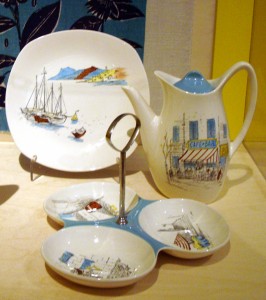

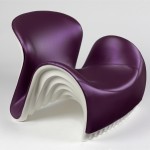
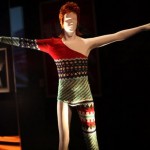
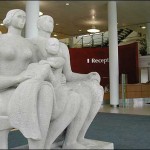
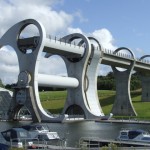
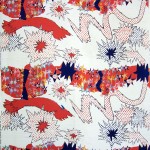
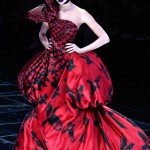
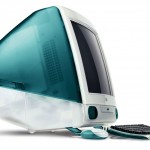
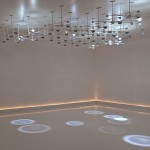
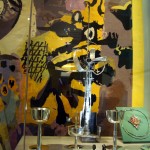
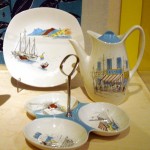
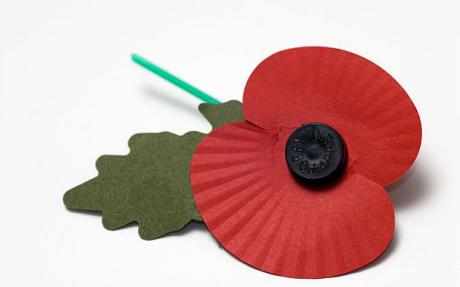







‘A bulldog’s dinner’ – what a great expression, within a wonderfully entertaining and informative post.
It would have been a joy to listen in on those telephone conversations as V & A staff explained the reasons for non-inclusion of designers’ creations. If Sir Alf Ramsey were still with us he might well have phoned to complain: “Where is my revolutionary design for a team without wingers? I did win the World Cup with it.”
The Falkirk Wheel is magnificent: those great Victorian engineers would nod in approval. They were quite good at designing and building boat lifts:
http://www.theheritagetrail.co.uk/industrial/anderton_lift.htm
Thanks for the link to the Anderton boat lift – and the heritage trail, John. Just clicking on to google maps makes me realise just how much of the country I haven’t seen. And then when I zoom in, I discover I need to visit places to explore them properly – and see the detail (which is something we seem to have forgotten in our innovative, modern world).
Great stuff, Susan. I wonder – if British Rail posters can become cool, can anything eventually become cool?
Talking of which, I’ve read that Kit Williams’ golden hare is on display in the exhibition… Masquerade exerted a weird power over my imagination as a boy. What a strange man Williams is…
I would imagine that any exhibition of post war British design, claiming over-view, lacks the distance required by the perspective of time, we’re still sitting on top of it all. Concorde is fascinating, the concept, from the nineteen fifties, gestation from the early sixties, birth pangs in the mid to late sixties. It was the triumph of a wish-list over reality. Neither the materials or the manufacturing techniques existed when the performance parameters were laid down, done on the hoof, arguably doubling costs.
Some aspects of engineering whether civil, aircraft or automotive can be classed as unintentional modern art. Many, unfortunately are internal and therefore unseen, a visit to either Duxford or East Lothian aircraft museums and a perusal of the Concorde’s wing cavities reveals all and will hint where the Falkirk Wheel design came from.
One aspect of the aircraft’s manufacture that should go down in history is the triumph of cross border co-opertion by various countries, all singing from different hymn sheets.
Duxford also exhibits the TSR2, of far more significance than Concorde, it’s hopes dashed by the useless Wilson government.